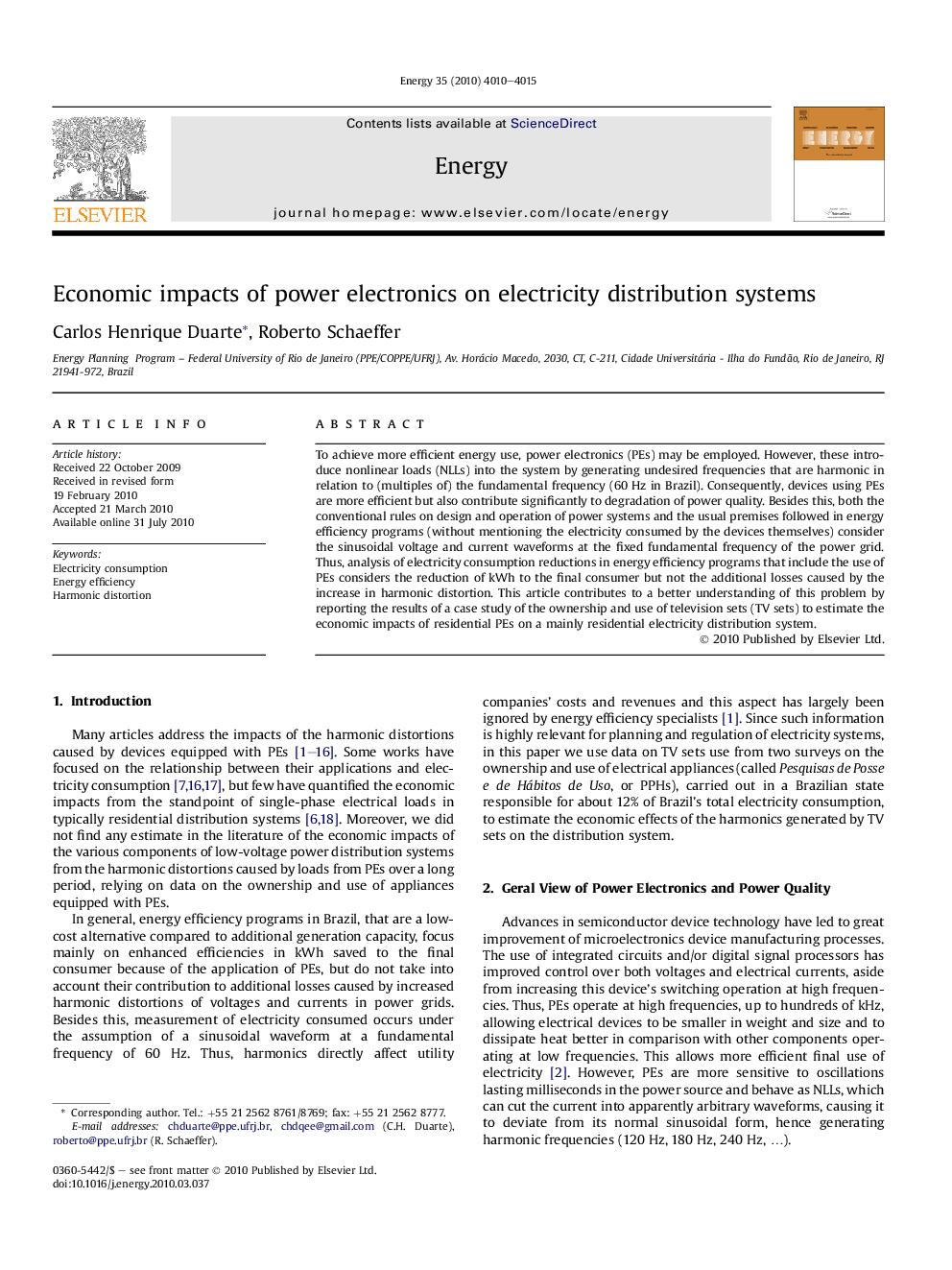| Article ID | Journal | Published Year | Pages | File Type |
|---|---|---|---|---|
| 1735157 | Energy | 2010 | 6 Pages |
To achieve more efficient energy use, power electronics (PEs) may be employed. However, these introduce nonlinear loads (NLLs) into the system by generating undesired frequencies that are harmonic in relation to (multiples of) the fundamental frequency (60 Hz in Brazil). Consequently, devices using PEs are more efficient but also contribute significantly to degradation of power quality. Besides this, both the conventional rules on design and operation of power systems and the usual premises followed in energy efficiency programs (without mentioning the electricity consumed by the devices themselves) consider the sinusoidal voltage and current waveforms at the fixed fundamental frequency of the power grid. Thus, analysis of electricity consumption reductions in energy efficiency programs that include the use of PEs considers the reduction of kWh to the final consumer but not the additional losses caused by the increase in harmonic distortion. This article contributes to a better understanding of this problem by reporting the results of a case study of the ownership and use of television sets (TV sets) to estimate the economic impacts of residential PEs on a mainly residential electricity distribution system.
